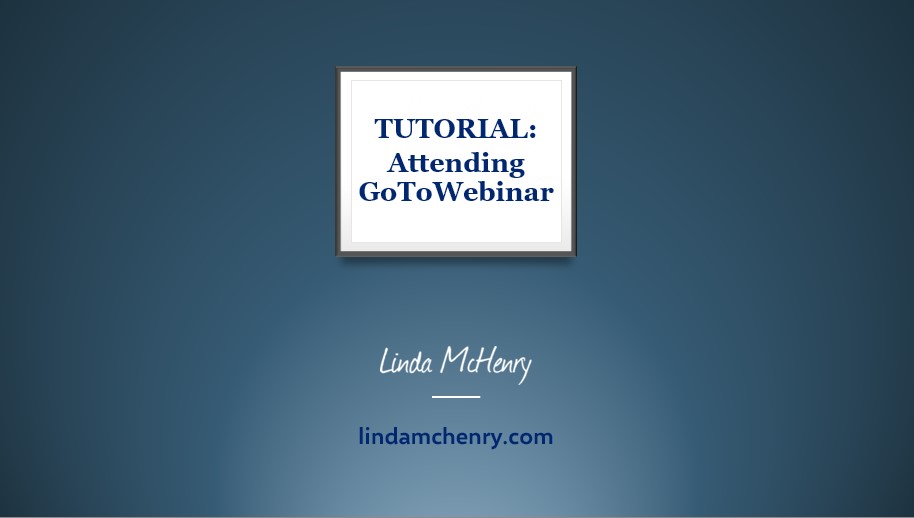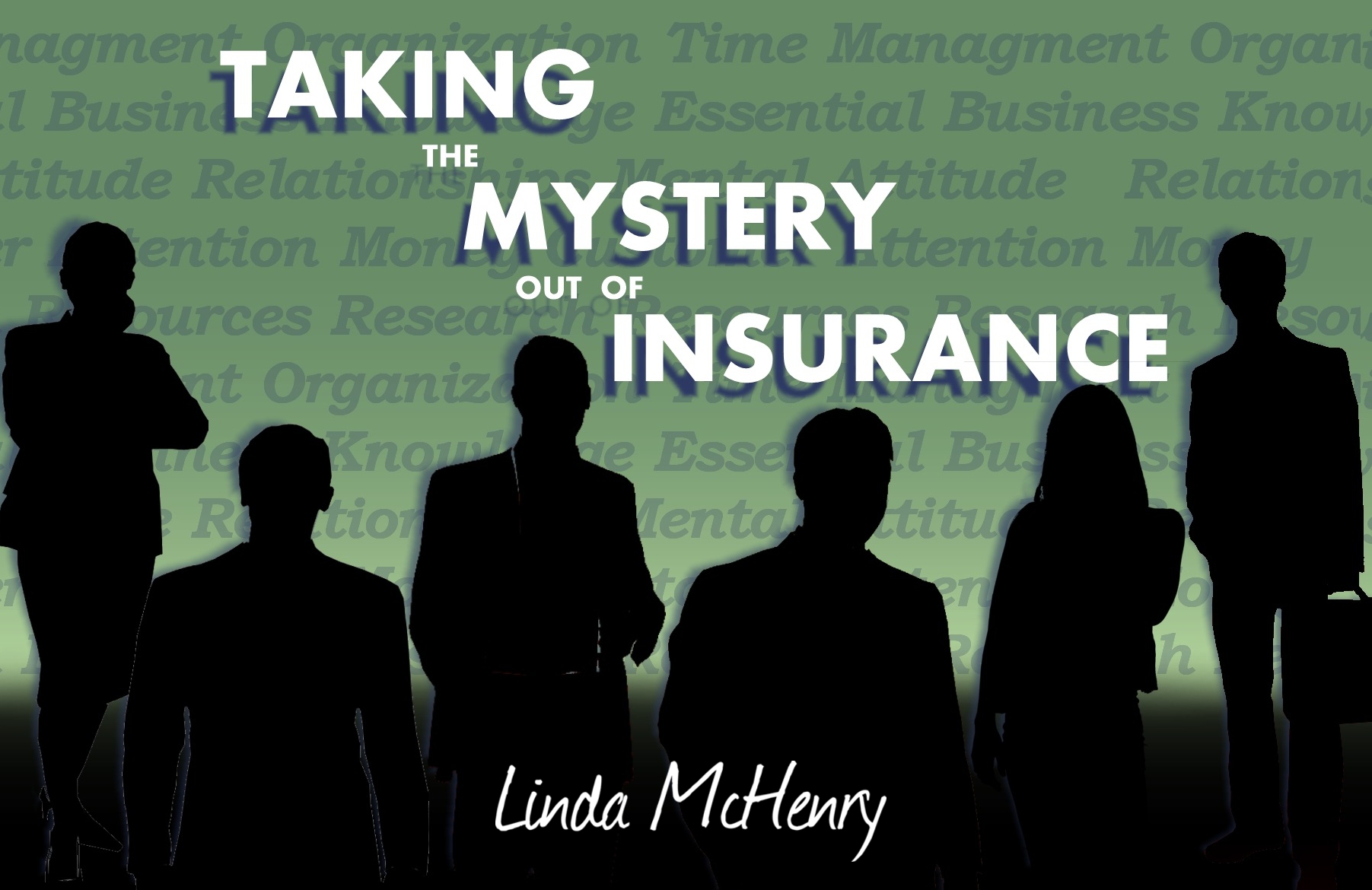Everyone loved my tutorial for using Zoom video chats so much, they asked me to do one for GoToWebinar. Here it is!
I’m hoping to have another GoToWebinar tutorial for presenters, along with all the neat options presenters can use, very soon.
Linda McHenry

Everyone loved my tutorial for using Zoom video chats so much, they asked me to do one for GoToWebinar. Here it is!
I’m hoping to have another GoToWebinar tutorial for presenters, along with all the neat options presenters can use, very soon.

I teach and attend webinars and video calls on a weekly, sometimes daily, basis. However, many of you do not.
In response to numerous requests for help with how to use Zoom, I’ve prepared a short tutorial. I hope it helps you out.


The Coronavirus Aid, Relief, and Economic Security (CARES) Act was signed into law to help Americans and U.S. businesses survive the COVID-19 pandemic. Although I’ve downloaded the 247-page bill, I haven’t read all of it yet. However, here are some of the major provisions that might affect you and your family.
The $1,200 and $500 each adult and child, respectively, will be receiving. First of all, not everyone will be receiving this money. The stimulus gives a tax credit to those who filed federal income tax returns in 2018 and/or 2019. So, if a person DID file a tax return in 2018 (or already this year), the tax credit will apply and money will be sent.
Secondly, the $1,200 and $500 amounts are based on the taxpayer’s adjusted gross income (AGI) shown on that 2018 or 2019 federal income tax return. The amount is a $1,200 tax credit per individual and, once the taxpayer’s income exceeds a specified amount, the tax credit is reduced. AGI thresholds are:
My understanding is that the tax credit is reduced by 5% of so much of the AGI that exceeds the above thresholds. Once I read the enter law, I’ll have more info for you about that.
The $600 additional weekly unemployment benefit. The federal government is funding additional unemployment benefits … with limitations. The $600 weekly amount is paid over and above the amount paid by the state, but only in accordance with specific provisions. Some employees will only be eligible for the extra benefit for being unemployed between April 5 and July 31, 2020. Others will be eligible for benefits for a longer period.
The expansion of benefits will apply to the self-employed, independent contractors, people with a short work history, and a few other categories of workers. However, these individuals must meet requirements pertaining to COVID-19, including being diagnosed with coronavirus, being a caretaker for someone with the virus, or losing one’s job because of the pandemic. Other conditions also make a person eligible for unemployment benefits, as well.
Special provisions about retirement plans:
As I read and learn more, I’ll share it here, as well as on my podcast and You-Tube channel.

You can view this content on YouTube, or listen to it on my Podcast.

The Affordable Care Act, also known as the ACA and Obamacare, included a provision that taxed most Americans who didn’t buy and keep in place a specific type of health insurance. The reasoning behind the tax was the expectation that if EVERYONE were insured, rates would go down.
Not everyone agreed with this perspective and litigation was filed against the federal government. The Supreme Court ruling a few years later declared the Individual Mandate, the provision requiring the tax, constitutional because Congress has the power to impose taxes on Americans.
Unfortunately, everyone didn’t buy insurance after the ACA and its tax penalty became law, and the rates didn’t go down, either. In fact, in many cases they went up. And kept going up. The ACA was revised in 2017 and the tax penalty was reduced to zero effective 2019.
This was good news to all the people who chose not to buy insurance, but opponents of the ACA filed more litigation to have the entire law declared unconstitutional. The end result of that legislation brought about a ruling by the Fifth Circuit Court of Appeals last December. The Court ruled that if the Individual Mandate no longer contained a tax, it was unconstitutional. Essentially, if a tax is $0, it can’t be billed, collected, or enforced–so it isn’t real. Sort of like the tree falling in the woods and no one hearing it.
Anyway, what this means is that your clients who didn’t have health insurance last year, won’t be paying a tax penalty when they file they federal income tax returns ins April. However, if they live in one of the six U.S. jurisdictions that has its own Individual Mandate at the state level, they might still be taxed on their state returns if they didn’t have state-mandated coverage. Those 6 jurisdicitons are California, the District of Columbia, Massachusetts, New Jersey, Rhode Island, and Vermont.
Right now, opponents of the ACA who want the entire law declared unconstitutional are in the process of reviewing all the ACA’s provisions before bringing their case back to the District Court. It’s expected that the District Court will take some time considering and will eventually strike that down.

The Taking the Mystery out of Insurance podcast is now live! The Welcome episode aired on March 22nd and the official first episode will air on April 21st. Between now and then I’ll be broadcasting trailer episodes to announce upcoming episodes.
On the podcast, my guests and I take the subject of insurance and break it down into simple language, sharing concepts that help insurance professionals and their clients avoid the pitfalls of confusion and misunderstanding. Each episode will include a Q&A section, were I answer insurance-related questions submitted by listeners.
You’ll be able to find the podcast on YouTube, Apple, Castos, Pocket Casts, Stitcher, Spotify, and Google Play.
Click here to send your feedback about the podcast, to suggest future topics, or to submit a Q&A request.